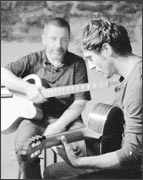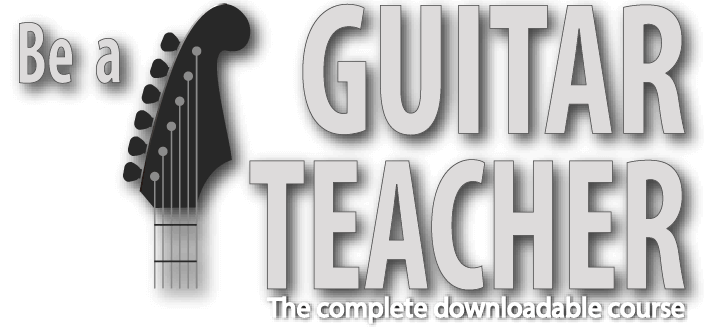Guitar teaching and the magic of different approaches
In education there are three learning styles that are often referred to: Visual, Auditory, and Kinesthetic (VAK):
Visual – learning through seeing; such as written language, charts, demonstrations, etc.
Auditory – learning through listening; such as lectures, explanations, discussion, etc.
Kinesthetic – learning through doing, moving, touching, etc.
The theory is that everyone has the ability to learn in each of these ways, but in varying degrees. One person may have a strong preference for visual learning such as reading information off a page, whilst another may prefer listening to a spoken explanation.
 VAK and teaching guitar
VAK and teaching guitar
Teaching guitar, we can also make use of this learning model. By its nature, the guitar involves plenty of ‘doing’, so kinesthetic learning is central. The way you convey information to your students, however, can be adjusted to some degree.
This doesn’t mean radically altering your approach to teaching guitar; it could simply mean a little shift in emphasis to suit students that show a preference for one of these learning styles.
Similarly, you may notice that some guitar students don’t respond so well to one particular learning style. Again, a little shift in emphasis could go a long way.
An example of VAK in guitar teaching
Let’s say you achieve good results teaching rhythms to a guitar student by writing the rhythmic notation using a pen and paper whilst at the same time explaining the key concepts. This is a logical approach to teaching rhythm, and uses a combination of visual and auditory learning.
However, for teaching another guitar student that’s less of a visual learner you may get better results by having them get used to playing a particular rhythm first, by copying you.
After he or she has internalised the rhythm, then you could go into the rhythmic notation on the page. The emphasis here is initially on kinesthetic learning.
 So which is best for guitar tuition: V, A or K?
So which is best for guitar tuition: V, A or K?
As with many aspects of being a good guitar teacher, it’s down to you to identify what is best for each guitar student. Sometimes it will be easy to spot students that have a preference for V, A or K, whilst some students will respond equally well to whichever approach you take.
In general, try to teach guitar using combinations of each of these learning styles. If someone appears to struggle with certain concepts, try shifting the emphasis from one teaching style to another.
Simply being aware of these three learning styles can improve your teaching ability. This is good news for you as a guitar teacher, and good news for your guitar students.
![]()
 | Stuart Bahn |
| Stuart Bahn is a professional guitar teacher in London, and creator of the Be A Guitar Teacher video course. |
photo credit: seanmcgrath via photopin cc
photo credit: Ferran Savall at l’Eolienne, film version via photopin (license)
photo credit: you’re the voice i hear inside my head, the reason that i’m singing via photopin (license)
If you liked this article on approaches to teaching guitar please share it with others:

